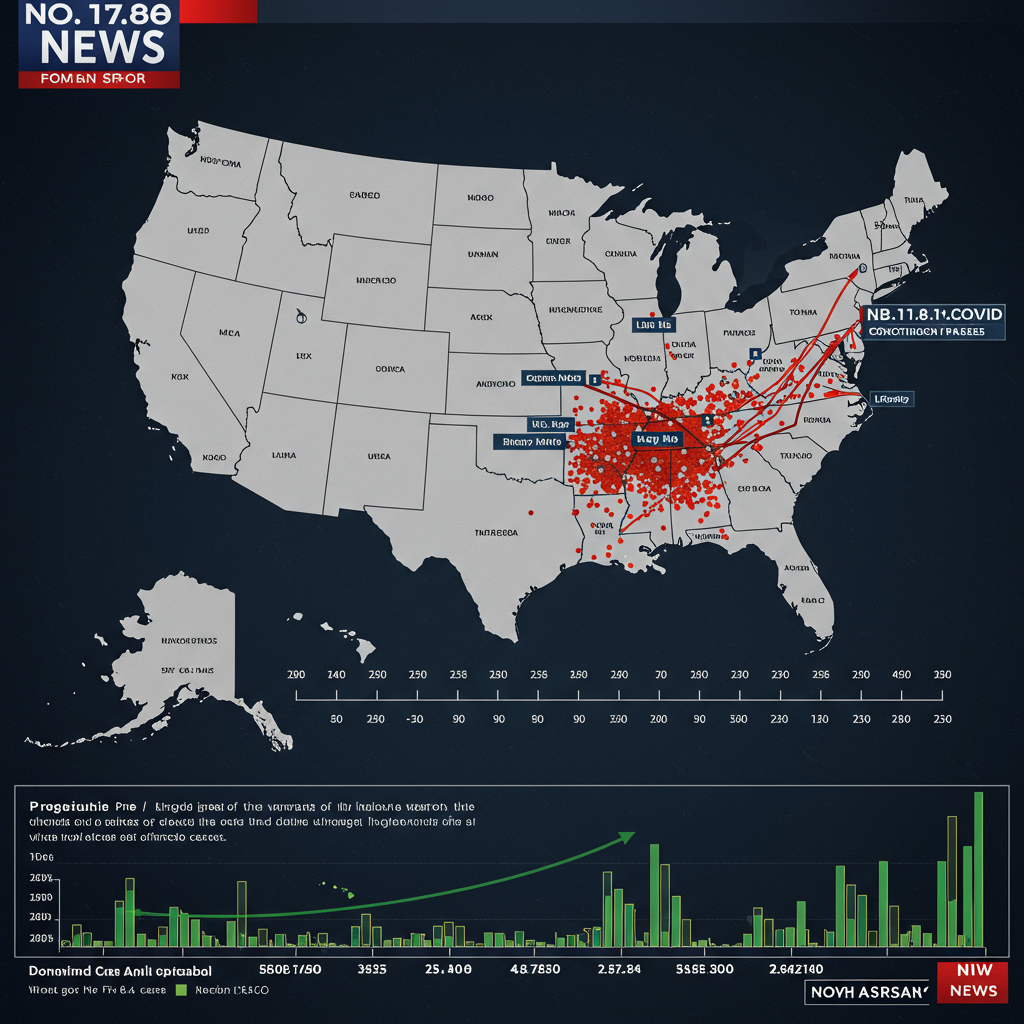A new COVID-19 variant, initially unheard of just a few months ago, is rapidly gaining ground across the United States. This strain, officially designated NB.1.8.1 and sometimes nicknamed “Nimbus,” is quickly becoming one of the most prevalent versions of the virus circulating nationally. Its swift rise has brought renewed attention to COVID symptoms and prevention efforts.
First detected in China in January, the NB.1.8.1 variant made up virtually 0% of U.S. cases until May. However, according to the U.S. Centers for Disease Control and Prevention (CDC)’s Nowcast tracker, its estimated prevalence jumped dramatically. By the two-week period ending June 7, NB.1.8.1 was projected to account for a striking 37% of cases, placing it as the second most common variant in the country, just behind the LP.8.1 (Omicron) strain at 38%. This represents a significant escalation from 2% in April and 15% in late May.
What is the NB.1.8.1 ‘Nimbus’ Variant?
NB.1.8.1 is identified as a descendant or a “slightly upgraded version” of the currently dominant LP.8.1 Omicron variant. Evolutionary biologist T. Ryan Gregory is credited with coining the informal nickname “Nimbus.” The variant has been detected through airport screening programs and has now spread across numerous states, including New York, California, Texas, and Illinois.
The World Health Organization (WHO) has classified NB.1.8.1 as a “variant under monitoring.” While not yet deemed a major global threat, its rapid spread indicates it warrants close attention.
Why is NB.1.8.1 Spreading So Quickly?
Experts suggest that genetic changes in the NB.1.8.1 variant, particularly mutations in its spike protein, may contribute to its rapid spread. The spike protein is how the virus attaches to human cells. These mutations could potentially make NB.1.8.1 more transmissible than LP.8.1 and better able to evade antibodies acquired from previous infections or vaccination. Subhash Verma, a microbiology and immunology professor, noted that NB.1.8.1 is likely to spread more easily and evade immune defenses more readily than its predecessor.
What Are the Symptoms of NB.1.8.1?
While the CDC has not specifically outlined symptoms unique to the NB.1.8.1 variant, public health experts and anecdotal reports indicate symptoms are generally similar to those seen with earlier Omicron strains.
However, one symptom has been particularly associated with this new variant: an extremely painful sore throat, colloquially described as “razor blade throat.” Individuals reporting this symptom have likened the sensation to having razor blades in their throats.
Experts explain that severe sore throat, or pharyngitis, is a common symptom of many viral infections, including COVID-19, and can be quite excruciating. It occurs when viruses infect cells in the throat lining, causing inflammation. While “razor blade throat” is not exclusive to NB.1.8.1 and can be caused by other viruses like influenza, strep throat, or even non-infectious issues, its frequency has been noted in some patients with the Nimbus variant. Reports from news outlets and social media highlight this notably painful symptom.
Standard COVID-19 symptoms listed by the CDC also apply and may include:
Fever or chills
Cough
Shortness of breath or difficulty breathing
Sore throat (which can be severe)
Congestion or a runny nose
New loss of taste or smell
Fatigue
Muscle or body aches
Headache
Nausea or vomiting
Diarrhea
Seek immediate medical care if experiencing severe symptoms such as trouble breathing, persistent chest pain, new confusion, inability to wake or stay awake, or if skin, lips, or nail beds appear pale, gray, or blue.
Is the NB.1.8.1 Variant More Severe?
Despite its increased transmissibility and immune evasion potential, public health experts currently state there is no evidence that the NB.1.8.1 variant causes more severe disease or is more likely to lead to hospitalization compared to previous variants. Overall COVID-19 trends in the U.S., such as test positivity and hospitalizations, remained relatively stable as of early June, though experts anticipate a potential summer uptick based on historical patterns.
However, individuals in high-risk groups, including the elderly, immunocompromised, and those with underlying health conditions, remain more vulnerable to severe outcomes if infected.
How to Protect Yourself and Access Testing
Fortunately, the World Health Organization has stated that currently approved COVID-19 vaccines are expected to remain effective against the NB.1.8.1 variant, particularly in preventing symptomatic and severe disease.
Staying up-to-date on vaccination remains a key protective measure. While CDC guidance as of early 2025 advised vaccination for most individuals over six months, recent changes announced by Health and Human Services may impact future recommendations and accessibility. These changes suggest that routine vaccination recommendations for healthy children and pregnant women could be removed, potentially limiting easy access for others who still wish to receive the vaccine, including healthy adults under 65 or healthcare workers. Those recommended for future vaccines may primarily be individuals over 65 and those with existing health conditions.
Beyond vaccination, recommended public health measures to help prevent infection from NB.1.8.1 and other variants include:
Practicing good hand hygiene by washing hands frequently or using sanitizer.
Considering wearing a mask in crowded indoor settings, especially when community transmission is high.
Improving indoor ventilation where possible.
Testing if symptoms develop to help prevent further spread.
Isolating when sick.
For those needing a test, the federal Increasing Community Access to Testing, Treatment and Response (ICATT) program continues to offer free COVID-19 testing at numerous locations across the country for individuals without health insurance. You can find a testing site near you through the CDC’s online locator tool.
While COVID-19 trends fluctuate, and new variants emerge, staying informed about symptoms, understanding your risk, and utilizing available protection measures remains crucial for navigating the evolving landscape of the virus. Even if not life-threatening, COVID-19 can be debilitating and may potentially lead to long-term symptoms, underscoring the importance of preventing infection where possible.


